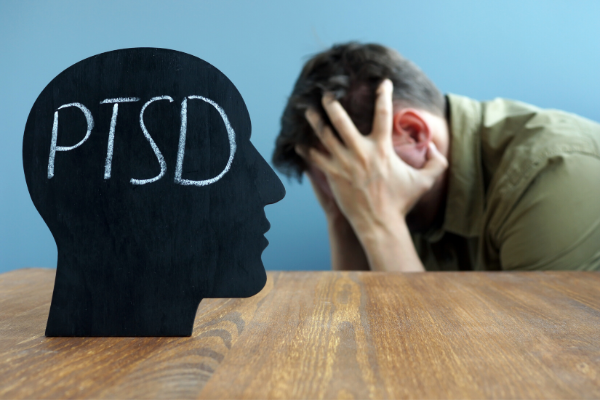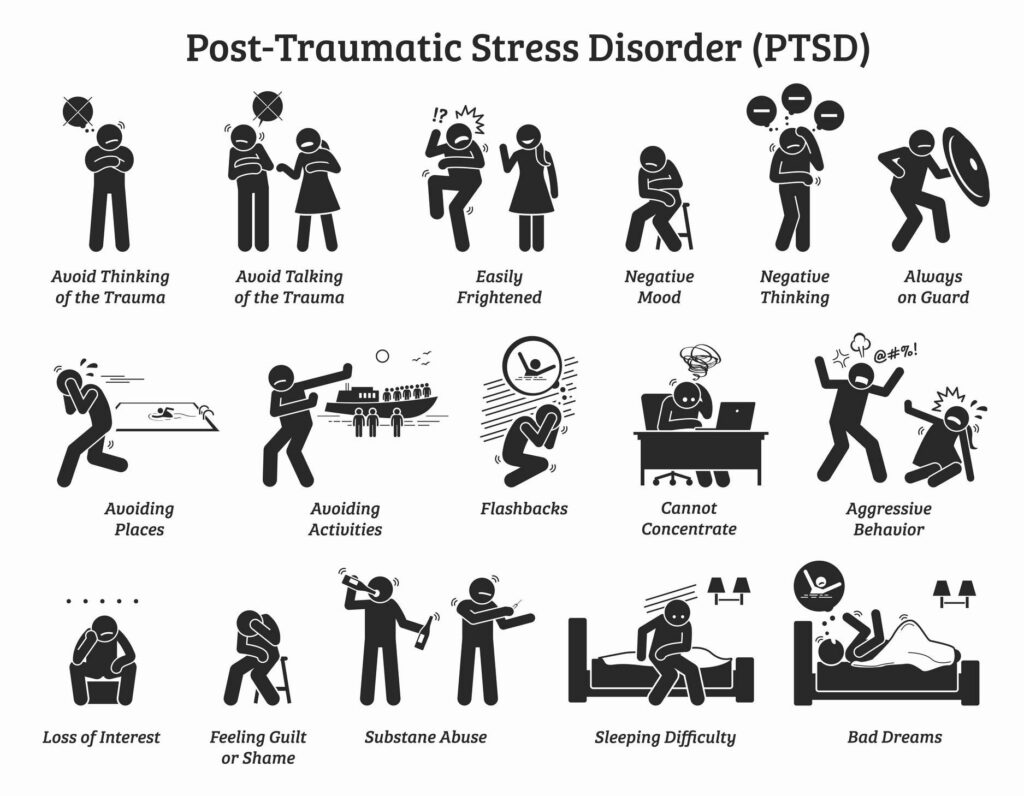PTSD
Post-Traumatic Stress Disorder (PTSD) is an anxiety disorder arising as a delayed and protracted response after experiencing or witnessing a traumatic event.
The experienced or witnessed event involved
- Threatened death of self or other
- Actual death of other
- Serious injury or threat to the physical integrity of self or others
- A response involving intense fear, helplessness, or horror

PTSD is characterized by
- Disturbing flashbacks or memories
- Disturbing dreams about the traumatic event/s
- An avoidance of stimuli such as people associated with the trauma
Symptoms include
- Hyperventilation
- Anger
- Insomnia
- An exaggerated startle response
These symptoms are usually present for more than one month
Effective treatment for PTSD involves
- Breaking the link between the memory of the traumatic event/s and the strong emotional response.
- Learning how to deal with any reminders of the traumatic event/s in a calm state.
- Getting your emotional needs met in balance.
It is important to note that effective treatment doesn’t involve repeated recounting of traumatic experiences.
The Rewind Technique
One of the most effective techniques to treat the symptoms of PTSD is the Fast Trauma and Phobia Cure, also known as the Rewind Technique. This is based on an original NLP technique devised by Richard Bandler . It was refined by the founders of the Human Givens approach, Joe Griffin and Ivan Tyrrell, to make it as reliably effective as is possible by aligning it with their insights into how trauma and phobias are processed in the brain. It works by allowing the traumatised individual, whilst in a safe relaxed state, to reprocess the traumatic memory so that it becomes stored as an ‘ordinary’, albeit unpleasant, and non- threatening memory rather than one that continually activates a terror response. This is achieved by enabling the memory to be shifted in the brain from the amygdala to the neocortex. It can quickly and safely, help neutralise traumatic responses.
Regardless of the severity or duration of your PTSD effective help is available.
